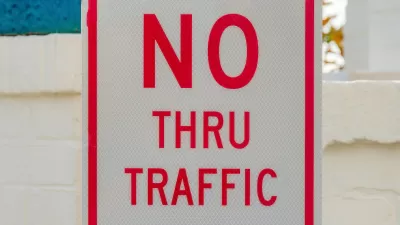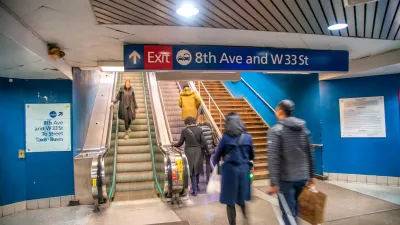A meta-study shows that public realm interventions can help reduce crime rates.

New research from the Futures Institute reveals a link between the design of the built environment and crime rates, showing a possible way to reduce the need for police officers through “preemptive streetscape improvements.”
As Gersh Kuntzman explains in Streetsblog USA, “Simple improvements to the built environment — such as the lowest-hanging fruit of bright street lights as well as traffic-calming strategies — play an outsized and underappreciated role in reducing the violence that is plaguing so many communities and can help alter the default solution of sending in more cops.”
A section of the report titled “Investments in Built Design & Community Infrastructure” highlights the public space interventions that can help reduce crime including street design, access to transit, green space, and street lighting. The report points to reduced access points to neighborhoods as one way to reduce crime (though some urbanists might bristle at the thought of cul-de-sacs as a crime prevention tool).
FULL STORY: Fighting Crime Without Cops: New Report Shows Key Role of Streetscape

Planetizen Federal Action Tracker
A weekly monitor of how Trump’s orders and actions are impacting planners and planning in America.

Maui's Vacation Rental Debate Turns Ugly
Verbal attacks, misinformation campaigns and fistfights plague a high-stakes debate to convert thousands of vacation rentals into long-term housing.

San Francisco Suspends Traffic Calming Amidst Record Deaths
Citing “a challenging fiscal landscape,” the city will cease the program on the heels of 42 traffic deaths, including 24 pedestrians.

Amtrak Rolls Out New Orleans to Alabama “Mardi Gras” Train
The new service will operate morning and evening departures between Mobile and New Orleans.

The Subversive Car-Free Guide to Trump's Great American Road Trip
Car-free ways to access Chicagoland’s best tourist attractions.

San Antonio and Austin are Fusing Into one Massive Megaregion
The region spanning the two central Texas cities is growing fast, posing challenges for local infrastructure and water supplies.
Urban Design for Planners 1: Software Tools
This six-course series explores essential urban design concepts using open source software and equips planners with the tools they need to participate fully in the urban design process.
Planning for Universal Design
Learn the tools for implementing Universal Design in planning regulations.
Heyer Gruel & Associates PA
JM Goldson LLC
Custer County Colorado
City of Camden Redevelopment Agency
City of Astoria
Transportation Research & Education Center (TREC) at Portland State University
Jefferson Parish Government
Camden Redevelopment Agency
City of Claremont




























